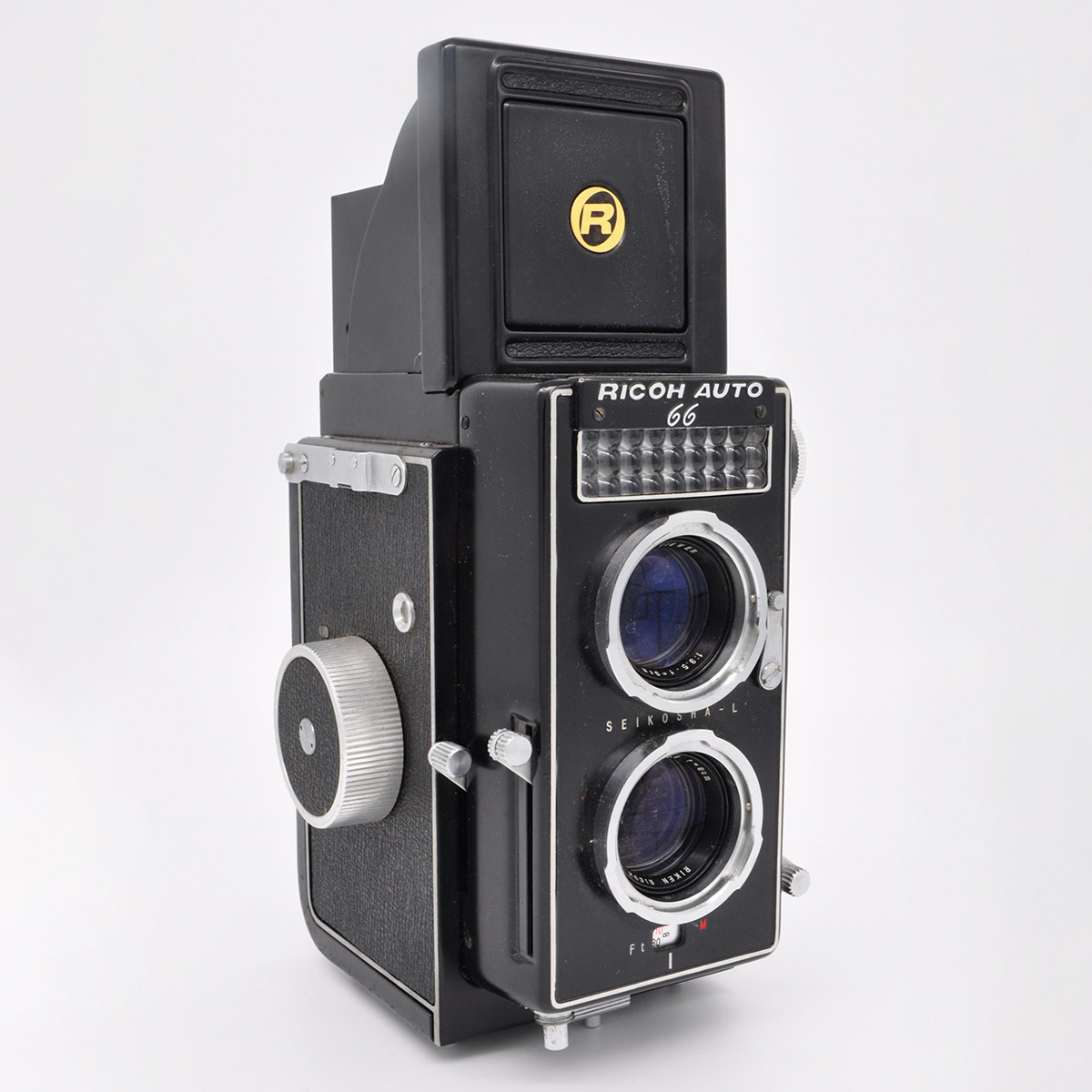Ricoh Auto 66
The Ricoh 66 Auto and myself have something in common, we were both introduced in 1959, and at the time of writing we’re both still going strong. This is a twin lens reflex, and was possibly the first TLR to incorporate any kind of automation. Advertising from the period boasts of the “The Automatic Electric Eye”, a feature common to a number of Ricoh cameras of the era. Today’s users would probably feel short changed by the implication that the camera’s exposure system is automatic. In reality you still have to set the aperture and shutter speed, albeit by aligning a circular target to a meter needle, rather than selecting specific settings. In fact the user is given no choice at all as to these settings, in low light the maximum aperture and slowest shutter speed is used, and in bright light the smallest aperture and fastest speed comes into play, intermediate combinations fill in between the extremes.
The Ricoh is clearly aimed at the amateur market, and the dials for setting the shutter speed and aperture that one would find on a serious camera are notable by their absence, instead everything is controlled by a knurled wheel below the lens board, which is operated with the left hand. It has a scale bearing the numbers 8.6 to 16, which are EV or “Exposure Value” numbers. The EV system was introduced in the 1950s and was an attempt to make non-basic cameras a little less intimidating to the less technically minded user. A given level of light was assigned a number, for example 12 in bright sunlight, and this number applied to all the aperture and shutter speed combinations that would give the correct exposure. For example, and EV of 12 would apply equally to 1/30th at f16, 1/125th at f8 and 1/500th at f4. A common feature was for the EV to be set, which then locked the shutter speeds and aperture together, such that if you change one, the other was also altered to match. I must confess, I never really got the hang of using EVs, but that’s probably because I felt confident enough with manual settings, I’m sure many users found it took some of the stress out of amateur photography.
When it comes to focussing, there’s a lever on each side of the taking lens, so either hand can be used, and the image on the focussing screen is clear and bright, with the customary swing in magnifying lens to assist with accurate focus.
The square format, and waist-level viewpoint that comes with using a twin lens reflex, became a classic look in the middle of the 20th century, with many famous names associated with it. Perhaps I was channelling my inner Vivian Maier when I took my customary mirror selfie with the Ricoh. Taken indoors, with the EV at 8.6, meant the aperture was wide, and the shutter speed slow, so the shot is not particularly sharp, but nevertheless I’m quite pleased with the composition.


